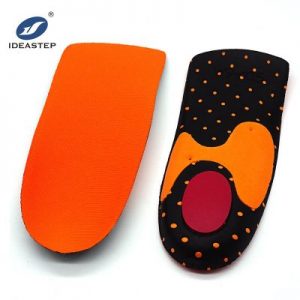
Shock-absorbing insoles, also known as cushioning insoles or orthotic inserts, are designed to provide additional support and cushioning to the feet, particularly the arches and heel areas. They serve several important functions:
1. Impact Reduction: Shock-absorbing insoles help reduce the impact forces generated when walking, running, or participating in high-impact activities. They absorb the shock generated with each step, reducing stress on the feet, ankles, knees, and other joints.
2. Pressure Distribution: These insoles distribute pressure more evenly across the foot’s surface. By doing so, they alleviate excessive pressure on specific areas such as the forefoot or heel, which can help prevent discomfort, pain, and potential injuries like plantar fasciitis or metatarsalgia.
3. Arch Support: Many shock-absorbing insoles provide additional arch support. This helps maintain the foot’s natural alignment, aids in proper biomechanics, and reduces strain on the plantar fascia (the band of tissue that supports the arch). It can be beneficial for individuals with flat feet or high arches.
4. Enhanced Comfort: A key role of shock-absorbing insoles is to enhance overall comfort. They provide a softer and more cushioned surface for the feet, making walking or standing for extended periods more comfortable. This is particularly important for individuals who spend long hours on their feet or engage in high-impact activities.
5. Injury Prevention: By reducing impact forces and distributing pressure, shock-absorbing insoles can help prevent various foot-related injuries, including stress fractures, shin splints, tendonitis, and joint pain. They can also offer support and stability, reducing the risk of ankle sprains.
6. Improved Performance: For athletes or individuals engaging in sports activities, shock-absorbing insoles can enhance performance by maximizing comfort, reducing fatigue and muscle soreness, and improving overall foot biomechanics.
It’s important to note that shock-absorbing insoles are not a one-size-fits-all solution. The type of insole needed may vary depending on an individual’s foot structure, specific needs, and activities. Consulting with a healthcare professional, such as a podiatrist or orthopedic specialist, can help determine the most appropriate type of insole for specific foot conditions or requirements.
Related product links: https://www.aideastep.com/product/3-4-absorb-shock-insole/
